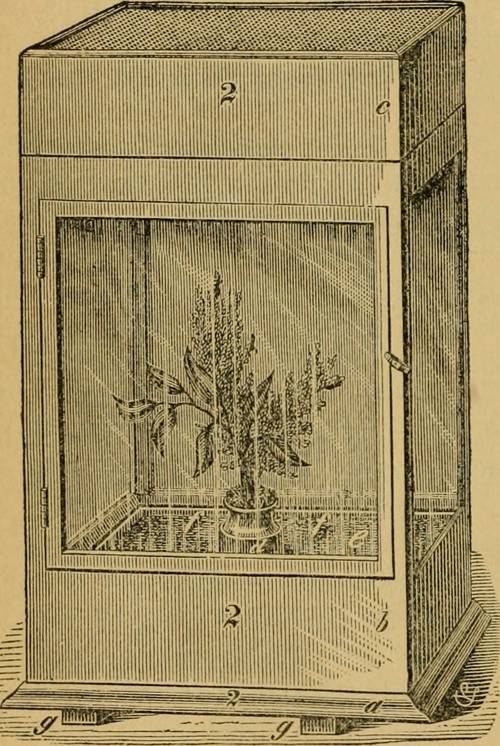
FAQ About Indoor Plant Pests: Identification and Removal

What are common pests that affect indoor plants?
Common pests that affect indoor plants include spider mites, mealybugs, aphids, whiteflies, fungus gnats, and scale insects. Each of these pests can cause significant damage to plants if not addressed promptly.

How can I identify spider mites on my indoor plants?
Spider mites are tiny arachnids often found on the undersides of leaves. You might notice them as small moving dots. A big indicator of their presence is the fine webbing they leave on the plant. Leaves may show small white or yellow spots and eventually turn yellow and drop if the infestation is severe.

What natural methods can be used to remove mealybugs from indoor plants?
To remove mealybugs naturally, you can use a cotton swab dipped in rubbing alcohol to dab each bug. Neem oil spray is also effective against mealybugs. Consistent application might be required to ensure all generations of the pest are controlled.

Are chemical pesticides safe to use on indoor plants?
Chemical pesticides can be effective against indoor plant pests but should be used with caution due to potential toxicity to pets and humans, especially in enclosed areas. Always follow the manufacturer's instructions, use protective gear, and ensure good ventilation during application. Consider safer, organic alternatives when possible.

How can I tell if my plant has an aphid infestation?
Aphids are small, sap-sucking insects that often cluster on new growth. Signs of an aphid infestation include distorted or stunted growth, sticky substances on leaves (honeydew), and the presence of sooty mold. You might notice them in green, black, red, or white colors depending on the species.

What are the steps to take if I find pests on my plants?
If you discover pests on your plants, isolate the affected plant immediately to prevent the spread. Begin treatment by washing the plant, manually removing pests, and applying a suitable pest control method such as neem oil or insecticidal soap. Monitor the plant regularly after treatment.

How does neem oil work against indoor plant pests?
Neem oil serves as an insecticidal agent that interferes with the feeding, growth, and reproduction of pests. It acts by smothering the insects and disrupting their hormonal systems which prevents them from developing and reproducing. It's a suitable option for controlling a range of indoor plant pests.

Can indoor plant pests harm humans or pets?
Most indoor plant pests such as spider mites, mealybugs, and aphids do not directly harm humans or pets. However, their presence can cause allergic reactions in sensitive individuals. It is advisable to manage infestations promptly to avoid secondary effects like fungal growths or the stress pests might cause to plants.

What are signs of a whitefly infestation?
Whiteflies are tiny, moth-like insects that fly up quickly when the plant is disturbed. They typically reside on the undersides of leaves and can cause leaves to yellow and shed. A sticky honeydew substance might be visible, which often leads to sooty mold growth.

Is insecticidal soap effective for indoor plant pests?
Insecticidal soap is an effective, low-toxicity option for managing indoor plant pests such as aphids, spider mites, and whiteflies. The soap works by penetrating the outer shell of the pest, leading to dehydration and death. It requires thorough coverage of the affected areas to be effective.

How do I prevent indoor plant pest infestations?
To prevent infestations, maintain plant health through proper watering, lighting, and fertilization. Regularly inspect plants for signs of pests, and promptly isolate and treat any affected plants. Clean pots with soapy water before reusing them and quarantine new plants before introducing them to your existing collection.

What is the role of beneficial insects in controlling indoor plant pests?
Beneficial insects such as ladybugs, predatory mites, and lacewings can help control indoor plant pests by preying on them. These insects are part of a natural biological control method and can significantly reduce pest populations without the need for chemical treatments.

Can overwatering plants lead to pest problems?
Yes, overwatering can lead to pest problems by creating a damp environment conducive to pests like fungus gnats. These pests thrive in moist soil and can become a challenge if plants are kept too wet. It's essential to allow the soil to dry between watering sessions to prevent such issues.

What is the difference between scale insects and mealybugs?
Scale insects and mealybugs are both common plant pests, but they differ in appearance and behavior. Scale insects are small, oval, and often appear as tiny brown or white bumps on the plant. Mealybugs are soft-bodied, white, and appear cotton-like. Both suck plant sap but require different management strategies.

How should I clean my plant's leaves to prevent pests?
To clean plant leaves, use a soft cloth or sponge and gently wipe the leaves with lukewarm water mixed with a few drops of mild dish soap. This process helps remove dust and potential pests. Ensure to rinse the leaves with plain water afterward to remove soap residue.

Are there any common misconceptions about indoor plant pests?
A common misconception is that indoor plants are immune to pest infestations because they are inside. However, pests can easily be introduced through new plants, soil, or even through open windows. Understanding that pests can still be an issue indoors is essential for effective plant care.

How can aphid infestations be controlled organically?
Organic control of aphid infestations includes using insecticidal soap, neem oil, or introducing natural predators like ladybugs. Regularly spraying water on the affected plants can also dislodge and reduce aphid populations. Ensuring plants are healthy and well-maintained can prevent aphid problems.

What impact do spider mites have on indoor plants?
Spider mites feed on the plant's sap, leading to fine speckling, discoloration, and eventually leaf drop. Severe infestations can significantly weaken plants, making them more susceptible to other stresses and diseases. Early detection and management are crucial.

How often should I inspect my indoor plants for pests?
It is advisable to inspect your indoor plants for pests at least once a week. Regular inspection helps in early detection and control before pests can establish a significant population, reducing the damage to the plants and minimizing the need for extensive treatments.

Can using essential oils help in pest control for indoor plants?
Yes, certain essential oils like peppermint, lavender, and rosemary can help repel pests from indoor plants. They can be used as a spray by diluting a few drops into water. However, it's important to test the spray on a small leaf area first to ensure the plant does not react negatively.
